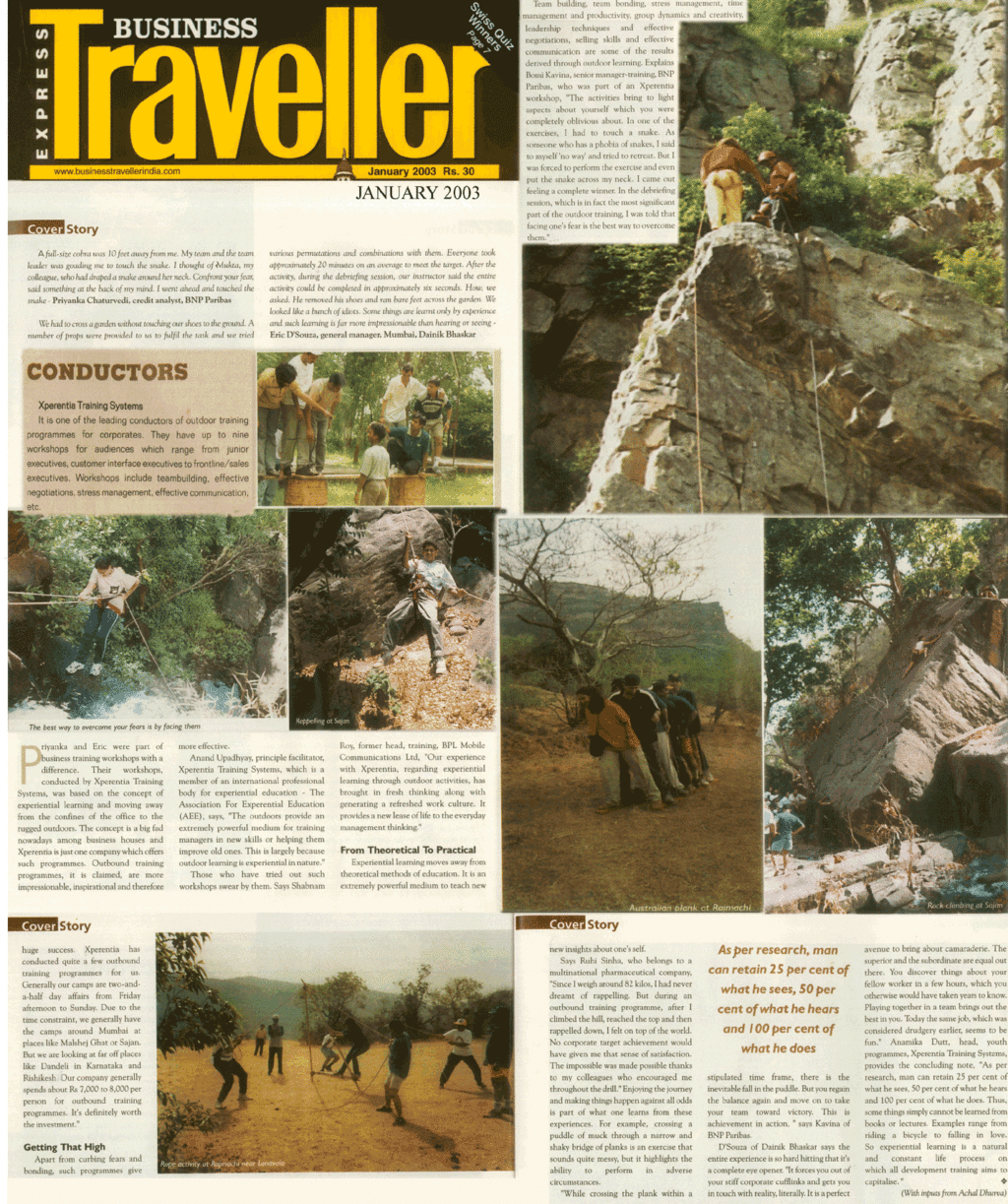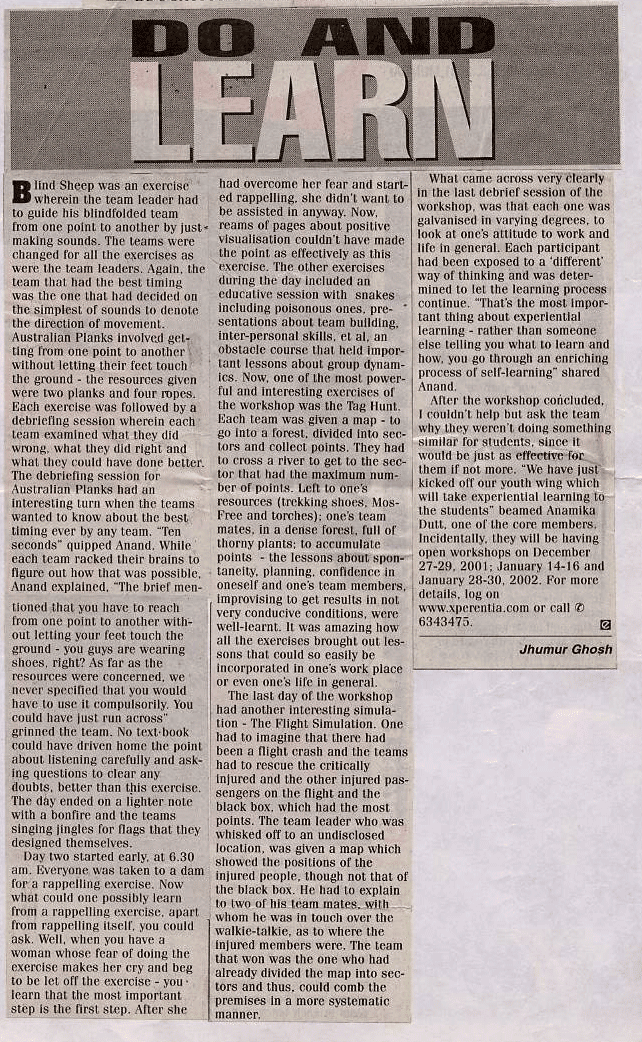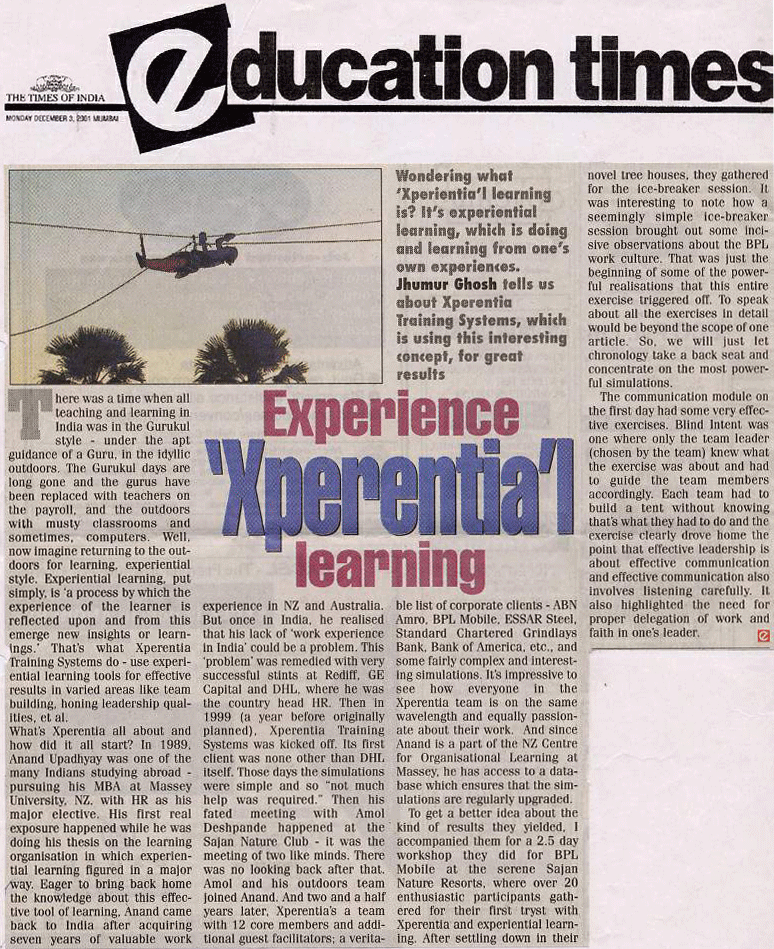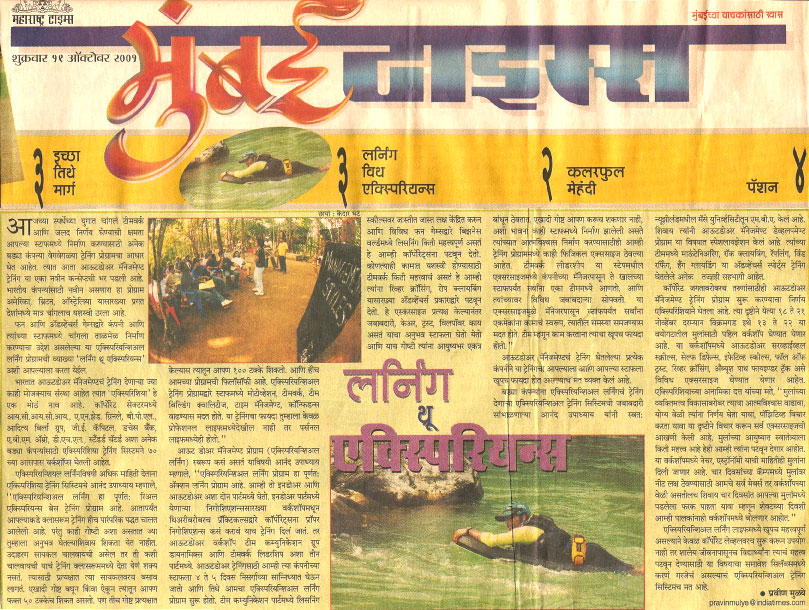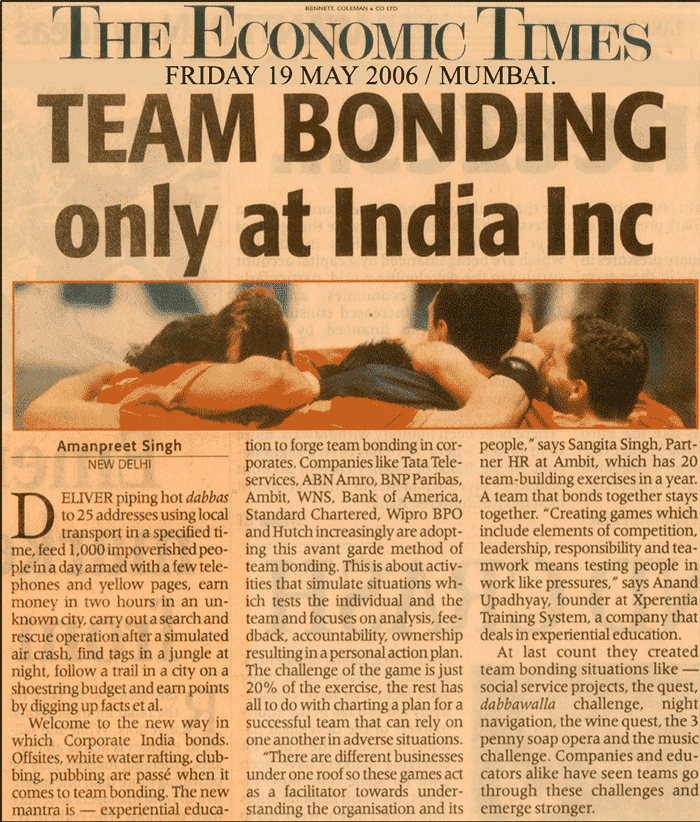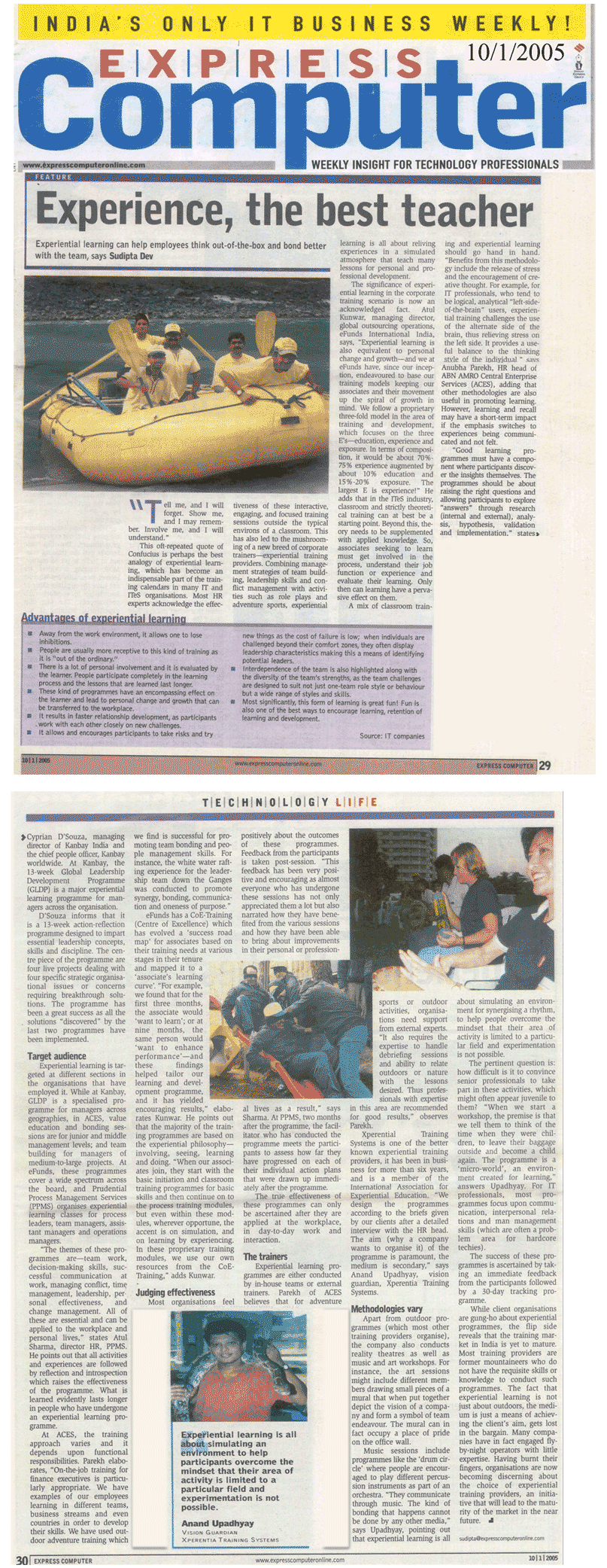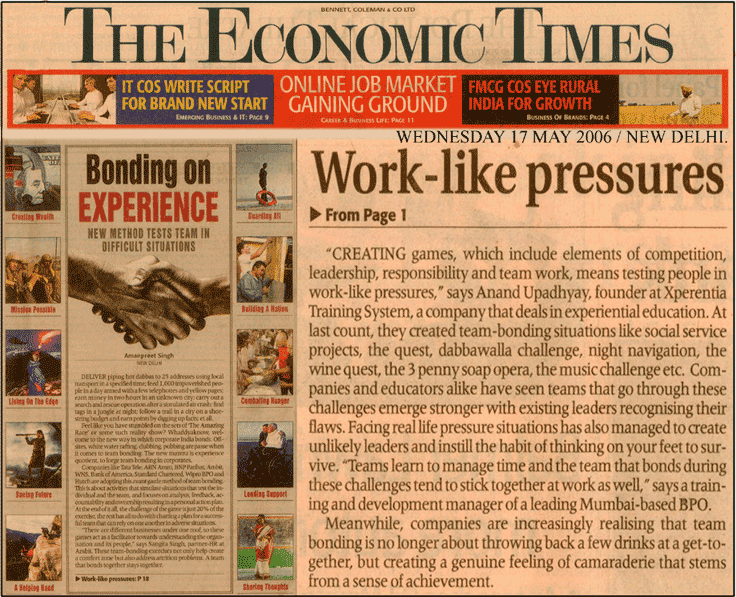While there are striking similarities between the Gurukul system and EL, the one big difference is that in EL, there is no ‘Guru’. The facilitator is on par with the participants in terms of status – everyone wears the same hat, literally and figuratively speaking. The facilitator is just that; he facilitates the learning process and does not interfere with it with his own biases and prejudices.
The following is a list of experiential learning principles as described by AEE (Association for Experiential Education Journal, 2011, para 4):
• Experiential learning occurs when carefully chosen experiences are supported by reflection, critical analysis and synthesis.
• Experiences are structured to require the student to take initiative, make decisions and be accountable for results.
Throughout the experiential learning process, the student is actively engaged in posing questions, investigating, experimenting, being curious, solving problems, assuming responsibility, being creative and constructing meaning.
Students are engaged intellectually, emotionally, socially, soulfully and/or physically. This involvement produces a perception that the learning task is authentic.
The results of the learning are personal and form the basis for future experience and learning.
Relationships are developed and nurtured: student to self, student to others and student to the world at large
The facilitator and student may experience success, failure, adventure, risk-taking and uncertainty, because the outcomes of the experience cannot totally be predicted
Opportunities are nurtured for students and instructors to explore and examine their own values.
Role of an InnerApp facilitator
The facilitator’s primary role includes setting suitable experiences, posing problems, setting boundaries, supporting students, insuring physical and emotional safety, and facilitating the learning process
The facilitator recognizes and encourages spontaneous opportunities for learning.
Facilitators strive to be aware of their biases, judgements and pre-conceptions, and how these influence the student. The design of the learning experience includes the possibility to learn from natural consequences, mistakes and successes.


